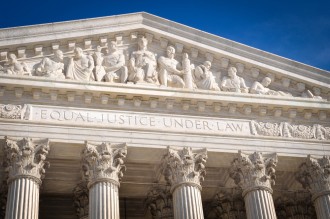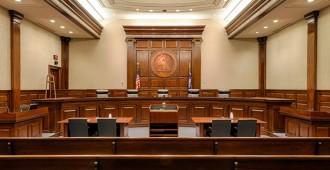
June 13, 2017
You Don’t Have to Dance the Patent Dance (Except Maybe in California)
Supreme Court Decides BPCIA “Patent Dance” Questions
The 2009 Biologics Price Competition & Innovation Act (BPCIA) provides an orderly process for manufacturers of generic biological drugs (called “biosimilars”) to market competing biosimilar drugs, in much the same way that the Hatch-Waxman act created an orderly process for approval of generic small molecule drugs. In particular, 42 U.S.C. §262(l) provides for an exchange of information about patents to simplify litigation before FDA approval. The exchange of information is between the biosimilar applicant and the manufacturer of the reference product, known as the reference product sponsor (“sponsor”). This back and forth exchange of information has been called a “patent dance,” as each party experiences a carefully orchestrated series of obligations to each other that unfold during the course of procedures provided in §262(l).
In 2015, the U.S. Court of Appeals for the Federal Circuit (CAFC) held that because the BPCIA explains (§262(l)(9)(C)) what happens if a biosimilar applicant does not make the required “patent dance” disclosures, that means that the disclosures are merely optional. According to the CAFC’s decision, a biosimilar applicant is free not to make such disclosures and thus be subject to an immediate lawsuit by the sponsor under (l)(9)(C).
The BPCIA also requires that the biosimilar applicant must give the sponsor notice at least 180 days before commercial marketing of the biosimilar product. The CAFC held that this notice could not be given until the applicant has its FDA approval in hand.
In other words, the CAFC gave one ruling that favors biosimilar applicants (disclosures are optional, not mandatory) and one that favors sponsors (no market entry until 180 days after FDA approval, at the earliest). Both sides appealed their respective losses to the Supreme Court. In a unanimous opinion authored by Justice Thomas, the Court reversed in part and remanded in part.
The Court agreed with the CAFC that the “patent dance” is not mandatory. §262(l)(9)(C) authorizes the sponsor — but not the biosimilar applicant — to bring suit if an application is submitted to the FDA without patent disclosures being made. However, (l)(9)(C) does not make provision for an injunction to force the biosimilar applicant to participate in “patent dance” disclosures. The Court reasoned that the statute should not be construed to provide more remedies than are explicitly specified.
Meanwhile, §262(l)(8)(A) provides that the biosimilar applicant “shall provide notice … not later than 180 days before the … marketing of the biological product licensed under subsection (k).” The Court reads this statute to say that the biosimilar applicant can give notice (and start the 180-day clock) any time after an application has been filed, but that the drug cannot go to market until the application has been approved (i.e., licensed).
This is a very favorable outcome for Sandoz (and other biosimilar applicants) and a correspondingly unfavorable outcome for Amgen (and other sponsors). There are two remaining issues in this case, however, that could prove a redemption for sponsors or a problem for biosimilar applicants.
First, Amgen had asked that Sandoz be enjoined to participate in “patent dance” disclosures under both the BPCIA and California’s unfair competition laws (Ca. Bus. & Prof. Code §17205). The CAFC had reasoned that because 35 U.S.C. §271(e)(4) provides that “[t]he remedies prescribed by subparagraphs (A), (B), (C), and (D) are the only remedies which may be granted by a court for an act of infringement described in paragraph (2),” this constitutes an express displacement of any state law remedies. The Court, however, reads the cited tail of §271(e)(4) as meaning that the remedies in (A)–(D) are the only remedies that can be given for violating the constructive infringement provisions of §271(e). That is not to say, however, that there are not other remedies available for violations of other statutes, including Ca. Bus. & Prof. Code §17205.
In other words, the Court is convinced that the cited portion of §271(e)(4) does not displace state law remedies. The Court considers it an open question whether some other federal law provision displaces state law — a point that the Court expressly declined to decide here. Rather, the Court vacated this portion of the CAFC decision and remanded for further consideration of the California law question. Obviously, if the CAFC were to hold that the BPCIA cannot be used to compel biosimilar applicants to perform the “patent dance,” but that California law can be used for this purpose, such a decision would dramatically alter the outcome of this case.
The second point to watch is that Justice Breyer filed a concurrence in which he agreed completely with Justice Thomas’ statutory analysis. Justice Breyer also noted, however, that the FDA has not yet promulgated regulations implementing the BPCIA. If and when the FDA does so, Justice Breyer cited Nat’l Cable & Telecomm. Assn. v. Brand X Internet Serv., 545 U.S. 967, 982–82 (2005) to remind readers that such regulations would be entitled to Chevron deference, and therefore those regulations might well displace the Court’s own holding here. Therefore, it will also be worthwhile to monitor FDA regulations on these points as they are promulgated.
The important take-away from this decision, however, is that biosimilar applicants can choose, for their own convenience, whether they prefer the ordered predictability of the “patent dance” or the greater confidentiality of the (l)(9)(C) process. The coordinated disclosures of the “patent dance” can take a long time, so the (l)(9)(C) path is likely faster if the biosimilar applicant is confident about its non-infringement and invalidity positions. On the other hand, the (l)(9)(C) path gives the sponsor nearly complete control over the patent litigation process. If the biosimilar applicant is uncertain about which patents are likely to be asserted, the biosimilar applicant may prefer to engage in the “patent dance,” to retain some measure of control about which patents might be asserted and when and where the litigation is commenced. Going forward, the choice of “patent dance” or (l)(9)(C) will be an important decision for each biosimilar applicant to consider before filing an application with the FDA.





































